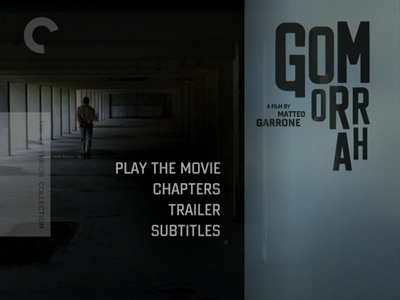
When I first saw Gomorrah earlier this year, I was at a loss for how to easily describe it to people. It's a complicated work, packing into 2 hours and 17 minutes enough story to cover an entire season of a quality cable television program. In the end, I turned to one such program for my analogy. You know the Hamsterdam storyline in the third season of The Wire

Directed by Matteo Garrone and adapted by a squadron of screenwriters (six in total) from the journalism of Roberto Saviano
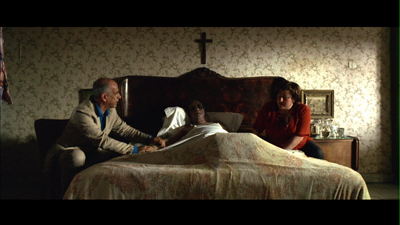
Gomorrah is a multilayered film, moving up and down the criminal lines to look at the different levels of the mafia organization. Garrone presents five separate stories, all running parallel, all sending whatever money being earned in the same direction, but never crossing over. This starts young, with a rookie being indoctrinated into the club, and runs all the way up the flagpole to a veteran swindler who is now working the business end of things. Franco (Toni Servillo, also seen this year in the aesthetically similar political film Il Divo) is running a waste management scheme, though unlike the waste management in The Sopranos, it's a real operation, not a front. He offers to unload any garbage, no matter how toxic, for half the price of his legitimate competitors, finding remote locations where he can hide the stuff away. He even pays farmers who are in debt to let him further sully their land. Franco is a go-getter, and he never uses a gun, he is capitalism personified. His social justification: screw the other guy if it means helping your own. Or, more importantly, yourself.

On the other side of things is Toto (Salvatore Abruzzese), a kid from the slum who goes from delivering groceries to muling drugs in one easy move. The chilling thing here is not that Toto chooses to be a part of the warring gangs, but how easily he does it. There doesn't seem to be much thought to it, it's just the next logical step at his age. His trial by fire is standing still wearing a bulletproof vest and letting one of the enforcers shoot him in the chest. Toto could conceivably survive to one day be like Franco, though he is more likely to be one of the anonymous dealers that run the day-to-day and who either get arrested or shot. In such a case, the Family takes care of the family of their fallen comrade, and actually Toto is best reflected in Don Ciro (Gianfelice Imparato), the delivery man who brings the salaries to those left behind. Dressed in a beige windbreaker, dutifully following his list, Don Ciro is a big nothing in the grand scheme of things, and he knows it. He is a small speck within the larger construct, and as it all continues to engulf him, he's losing his nerve.
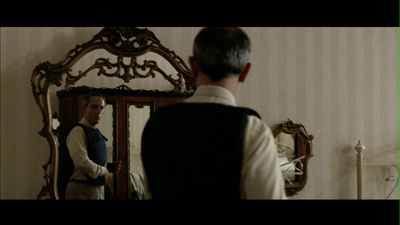
See how complicated this all is? And that's still only three of the five stories. All aspects of life are represented in Gomorrah, the garbage people pump into themselves and the garbage they pump out--literally and metaphorically. Whole industries thrive within Naples, including underground garment manufacturing. Designers come in with a clothing line, and different sweat shops bid on how quickly and cheaply they can make a large order. Top of the line in terms of production is Pasquale (Salvatore Cantalupo), a tailor who knows how to get results. His boss is a bit of a shyster, however, and never comes through on promised bonuses and overtime pay. When a Chinese rival approaches Pasquale to come give his workers a tutorial in how to produce quality on the cheap, Pasquale takes him up on it. It's not the best choice. This is akin to a criminal double-cross and not without its consequences.
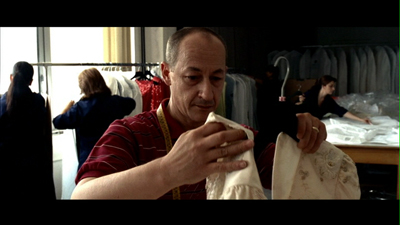
The final story is the most memorable and perhaps the most important. Wreaking havoc throughout Naples are two teenage boys, Sweet Pea (Ciro Petrone) and Marco (Marco Macor), two self-styled Scarfaces who fancy themselves big-shot Mafioso. They steal drugs and guns and thumb their noses at the local crime bosses. They are media culture come to dangerous life, hip-hop wannabes with more bravado than sense. Yet, they are also complex characters, their seeming lack of motivation beyond their own pleasure actually being a smokescreen that masks their frustration at not being able to uncover their own hidden depths. When not in action, they are restless and lost, always looking for something to occupy their feral minds. Sweet Pea in particular seems out of step with himself, shy with women and quick to panic when the violence turns against him. In a scene after their first on-screen drug heist, he dances to music on the jukebox, making come-hither advances on Marco, suggesting a homoerotic tension underlying their relationship. The sequence actually reminded me of Wong Kar-Wai, with the music, the Hawaiian shirts, and the inability to communicate passion.

Garrone apparently borrows Gomorrah's aesthetic from Saviano's book, which blended reporting with fictional technique to make something that was more evocative of the reality by bending the facts to fit the writing style. Garrone's regular director of photography, Marco Onorato, shot Gomorrah like a documentary, and the editing by Marco Spolenti favors long cuts, letting the camera move in and around the action rather than jumping between the actors with more traditional coverage. There is no effort made to gloss this story up with fancy gunplay or clever "street poetry" dialogue. Sometimes having the characters say nothing is more effective, and when they do talk, it's often clumsy, repetitive, and reflective of their station. Though literary themes are built, including plenty of dualities and an image near the end that shows human bodies being treated very much like Franco's barrels of toxic waste, there is no attempt made to sew these things up, no great "ah-ha!" moments. In fact, the only time the film attempts to moralize is the only time it falters. Franco is given a chance to defend himself when his protégé walks out on him, and his "the world needs men like me" speech is surprisingly on the nose for a script that otherwise avoids being so obvious.
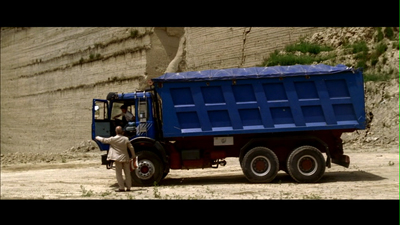
Nearly 1,200 words in, and I still find myself circling what really makes Gomorrah tick. This is the kind of movie you just have to climb in and roll with it. I admit, it's actually easier to comprehend, and thus more rewarding, on a second viewing, because there are so many characters and different elements to keep track of, the first time through, I was just getting acclimated. There were whole segments I forgot about from one watching to another, it was practically a new movie for me anyway.
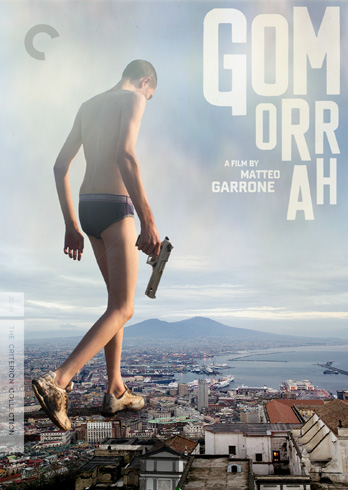
Special kudos go to Neil Kellerhouse for his exceptional and evocative package design for this release. The images he chooses--and partially creates--reflect the depth of the story in both terms of narrative complexity and literal spatial connections. The cover of the interior booklet shows an aerial shot of Don Ciro walking amongst the bodies of the slain, looking past walls and ceilings and creating an illusion of higher and lower, as if he is separated from them even though he is right there in middle.
More striking is the cover of the actual box. The other Ciro, the young thug, is shown in his bathing suit and tennis shoes, brandishing a pistol, and walking over the city like a malevolent god. In thumbnail form, the way I kept seeing it online, it just looks like a still from when he and Marco are having target practice at the river. It's only when you really look at it and see it at regular size that the full picture becomes clear.
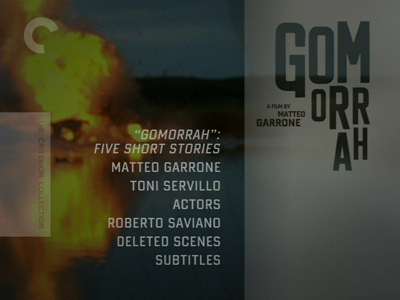
The whole DVD experience for Gomorrah is enhanced to peel back the various layers and show the schematic of the narrative. A second disc is devoted to the behind-the-scenes on the movie, including new interviews with Matteo Garrone and Roberto Saviano, as well as an hour-long look at the making of the film and the five stories that form its whole. Given the way the movie already blends fact and fiction and blurs the lines between, it's all the more fascinating to obliterate the illusion altogether. Moviemaking is its own bizarre version of reality, a kind of separate fiction where real life is surreal anyway, so in a case like Gomorrah peeking behind the curtain locks everything together like fingers on two corresponding hands.
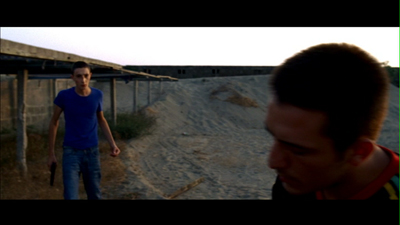
This disc was provided by the Criterion Collection for purposes of review. It will be in stores on November 24.

No comments:
Post a Comment